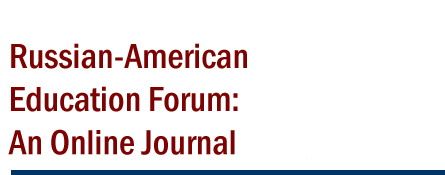
Authorial Schools: Definitions, Typologies and Tendencies of Development
The purpose of this article is to introduce the readers to the results of the author’s earlier long-term research of humanistic authorial schools in the 20th century. Considering an authorial school a specific phenomenon of the educational reality allowed the author to analyze its main characteristics, to point out primary definitions and tendencies of its development; it also permitted to build some classifications and typologies of such schools. In a way this article is meant to become an introduction to a number of descriptions of different authorial schools presented in this journal issue, starting with the papers of some school founders such as Olga Block and Jack Mc Gurgan, moving further to those who have been implementing authorial concepts in practice (Yael Barenholtz, Kathy Slawson and Betty Disney), and finally introducing researchers of some famous authorial schools of the past (Mikhail Boguslavsky, Richard Scheuerman and Arthur Ellis, Rosa Valeeva).
Newport-Mesa College High School
This article written by the school principal in association with the community college administrator assigned to this program talks about a very productive and challenging authorial model which proved to be reproducible in different educational settings. The authors clearly indicate their primary keys for success and introduce to the readers some intriguing strategies and techniques. They also show how effective could be such methods as developing individual learning plans and arranging for academic tutorial sessions for everyone who needs them.
The Just Community Approach in Israel: Process of Adaptation
The author describes the goals, the process and the problems of implementation of Lawrence Kohlberg’s Just Communitiesin Israeli schools. The article presents a detailed overview and a deep analysis of the changes in social education created by just communities. Many insights provided by the author will be equally challenging for researchers and school practitioners.
Janusz Korczak’s Holistic System of Education
This article introduces the readers to the history of a very special and very dramatic though very successful school created by a prominent Polish educator and writer Janusz Korczak. The author, being practically the first Russian researcher of educational insights of Janusz Korczak, manages to show his primary ideas which make his school both strictly authorial and unique. At the same time his concept definitely has a number of well-developed techniques and strategies which are well presented in the article and which can be replicated in other educational establishments.
The Timeless Light of “Red Dawns”
This article introduces the readers to a very famous and a very successful school commune of the 1920s and 1930s, almost forgotten later in the history of education, which was founded and headed by Ignaty Ionin. The author portrays the history of the school’s development and its gradual growth into a true effective educational establishment with such core values as labor, intellectual and creative activities, self-management, and project learning. The article does not only disclose new facts from the school’s life but it also clarifies the reasons for its founder’s success and his life tragedy.
Strategies for Developing a Strong School Culture
HOW CAN SCHOOL CULTURE BE DEFINED?
No single individual can make a school successful, however, a single individual, if he or she is the “leader,” can create stagnation and an unhealthy school climate. This is a phenomenon described more fully by the University of Texas education department on its website, www.uteach.utexas.edu. In their article, “Understanding School Culture,” the authors provide three examples of typical school cultures: the bureaucratic, the collegial, and the “toxic.”




